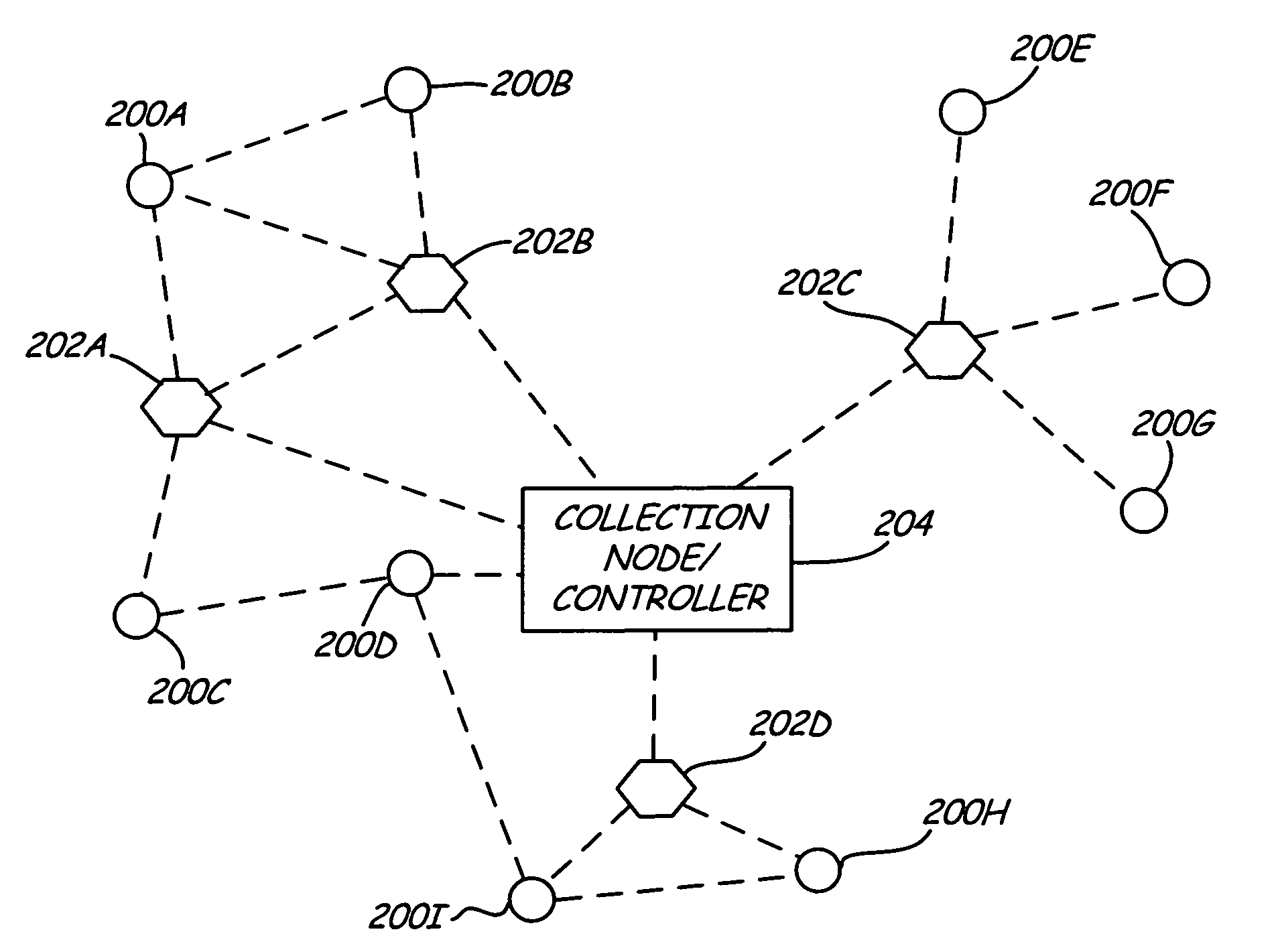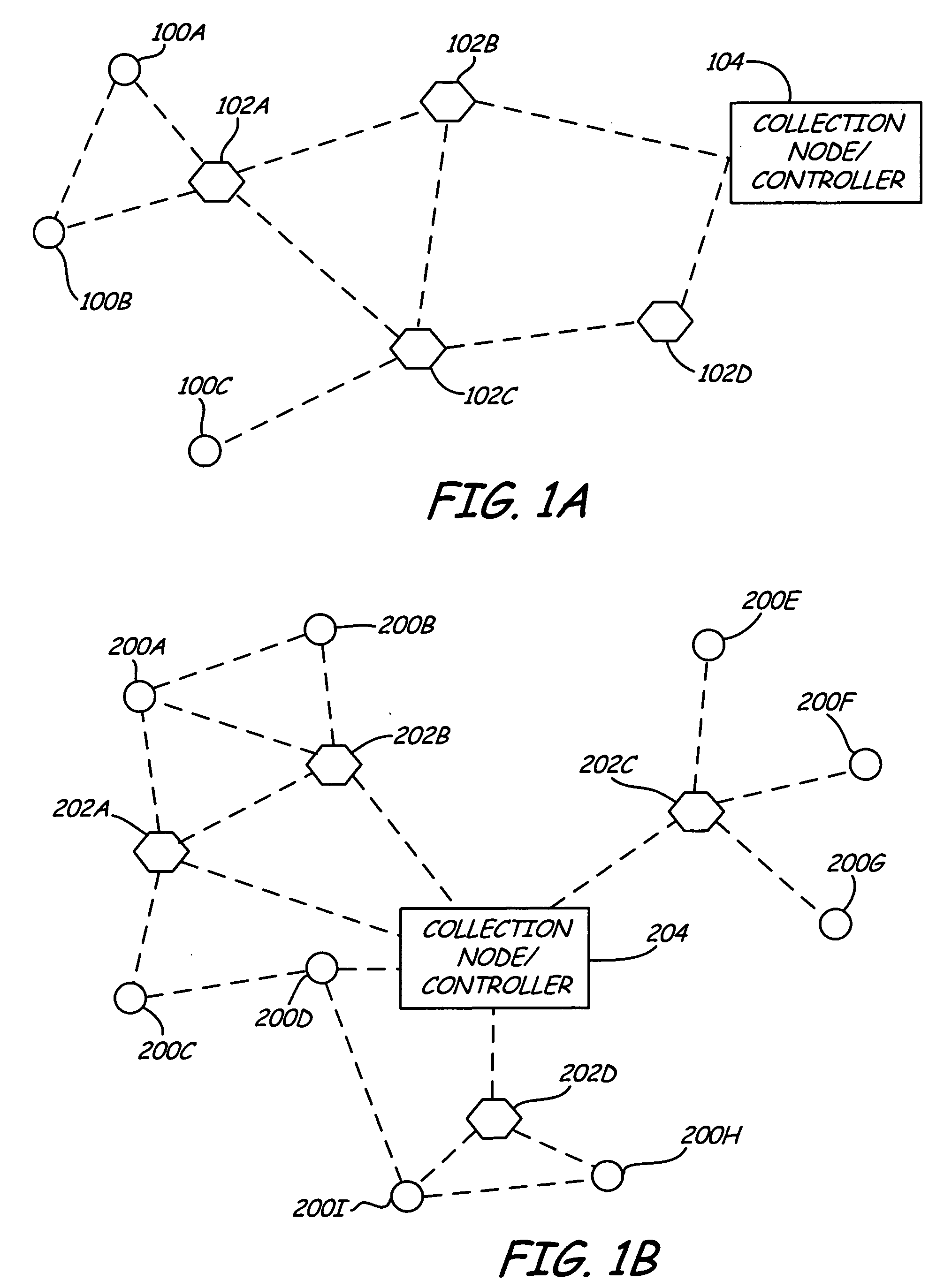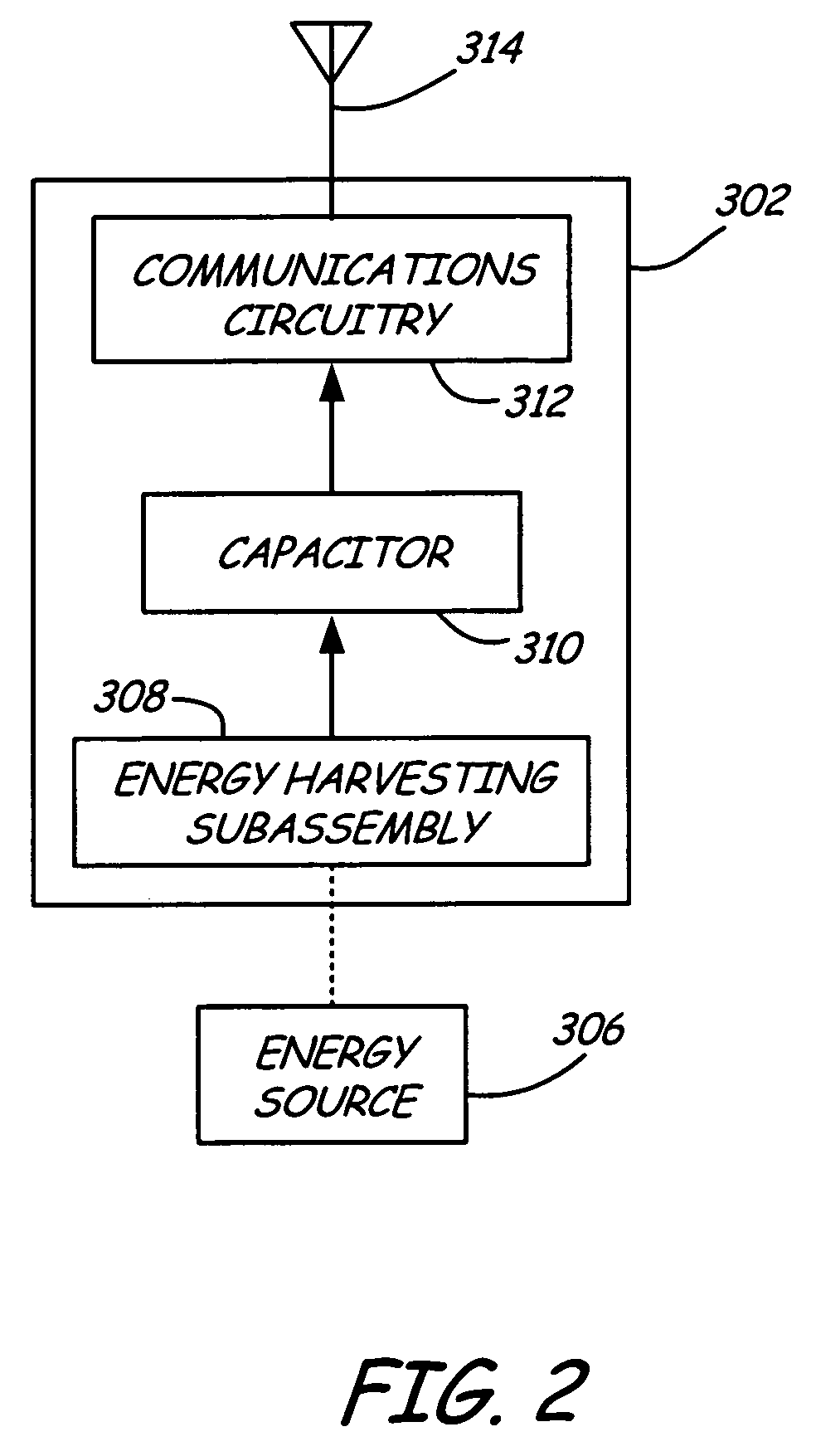Self powered son device network
a network device and self-powered technology, applied in the field ofsignal transmission systems, can solve the problems of labor-intensive wiring, inability to connect network devices to an electrical grid, and inability to provide power to such network devices
- Summary
- Abstract
- Description
- Claims
- Application Information
AI Technical Summary
Benefits of technology
Problems solved by technology
Method used
Image
Examples
Embodiment Construction
[0009]The present invention provides a wireless self-organizing network made up of one or more self-organizing network devices (hereinafter, “SON devices”) that are self-powered by harvesting energy from an adjacent energy source. The term “self-organizing network” as used herein refers to a communications signal relaying system that enables passive relaying of signals between two external nodes communicably connected to the self-organizing network. A self-organizing network can have a mesh, star, cluster, or other type of topology. “SON devices” are devices that passively relay signals within a network, and, as that term is used herein, SON devices are distinguishable from field devices that generate signals (e.g., sensors) and collect signals (e.g., data collection and data processing devices). According to the present invention, installation of the wireless self-organizing network is simplified by utilizing available energy sources to generate electrical energy to power those SON...
PUM
 Login to View More
Login to View More Abstract
Description
Claims
Application Information
 Login to View More
Login to View More - R&D
- Intellectual Property
- Life Sciences
- Materials
- Tech Scout
- Unparalleled Data Quality
- Higher Quality Content
- 60% Fewer Hallucinations
Browse by: Latest US Patents, China's latest patents, Technical Efficacy Thesaurus, Application Domain, Technology Topic, Popular Technical Reports.
© 2025 PatSnap. All rights reserved.Legal|Privacy policy|Modern Slavery Act Transparency Statement|Sitemap|About US| Contact US: help@patsnap.com



